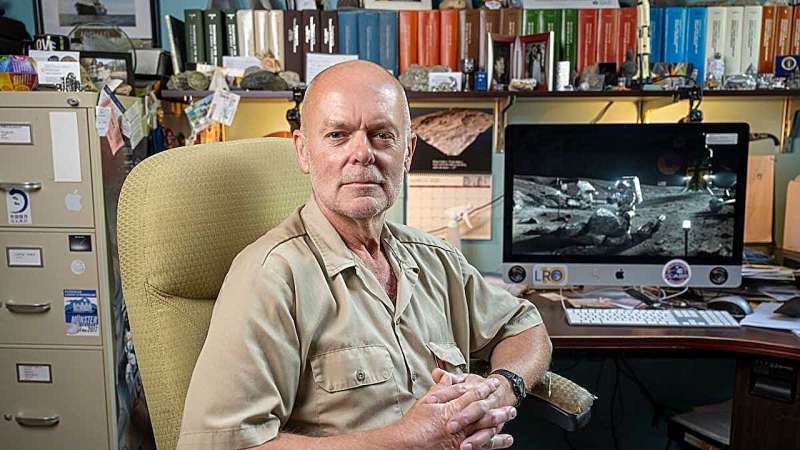Clive Neal, professor of civil and environmental engineering and Earth sciences at the University of Notre Dame and an expert in lunar exploration, said losing the VIPER program is another frustrating setback for U.S.-led efforts to explore the moon.
Neal answers five questions about the program and lunar exploration below.
What was the goal of the VIPER program and why was it important?
Well, it's the only volatile prospecting mission that NASA has. NASA wants to send humans back to the moon—U.S. policy states NASA shall "extend human economic activity into deep space by establishing a permanent human presence on the moon."
We're going to need life-support consumables in situ to do that—water, hydrogen, oxygen—so we need to know where those life-supporting consumables are. You don't want to put a base for humans in the wrong place—you need water and other consumables to be accessible.
Therefore, we need to know how much is there? Can we extract it? Can we access it? Is there reserve potential in this resource? That is critically important data. Now we're going to have to rely on non-U.S. missions to do the prospecting for us.
The mission was also significant in terms of industry and job growth around space technology and exploration. From a higher education standpoint, that is a new sector of the economy that students can train in and be a part of and help grow.
What impact would a mission like VIPER have on other types of missions?
If you can make water in situ resource utilization work on the moon, it will most definitely work on Mars, because the lunar environment is much more extreme. Mars has a tenuous atmosphere. But the one thing the moon and Mars have in common is that they are both toxic to humans. We need water, we need oxygen, we need life-support consumables to protect humans.
VIPER was designed for robotic prospecting for these life-support consumables, which in turn reduces the risk of human exploration on the moon and other destinations.
Would you call the moon a testbed for exploring other aspects of our universe?
It's definitely a testbed. In a paper published after he died, Krafft Ehricke, a German space engineer, said, "If God wanted man to become a spacefaring species, He would have given man a moon." It's in our own backyard.
Right now, we don't know how to protect humans and keep them alive in deep space, so we do it in our own backyard first. That then enables humans to explore more distant destinations.
What other impacts could come from a lunar prospecting mission like VIPER?
There is great commercial and economic potential in space exploration. The whole point of going up there is to make life better down here. We're creating job opportunities for our graduates.
We're starting to stimulate a whole new sector of our economy. And then there is the technology development needed to explore other worlds that have untapped benefits for life on Earth.
The moon's lack of atmosphere allows for an abundance of helium-3, a vital component for developing helium fusion energy. It has been calculated that one space shuttle cargo bay full of helium-3 would fuel the energy needs of the United States for one year.
China is very interested in developing fusion technology. They're looking at the moon as a way to get clean energy and we should also be looking at the moon as a clean energy source.
It's all interconnected. Right now, we're looking at water and ice because we need it for human exploration—for life support and for rocket fuel. But there are other volatiles that are going to be there and they will be useful. There are lots of good science, exploration and commercial interactions that can go on here.
What's needed in terms of supporting lunar exploration?
We need to re-educate the public to look at our space agency budget as an investment in the future of the nation. The sector is getting big enough that commercial services are growing, and that's what we want to see in cislunar space. We could actually end up with a huge space economy. If we go forward to the moon together, we could learn so much and improve life on Earth.
Provided by University of Notre Dame



